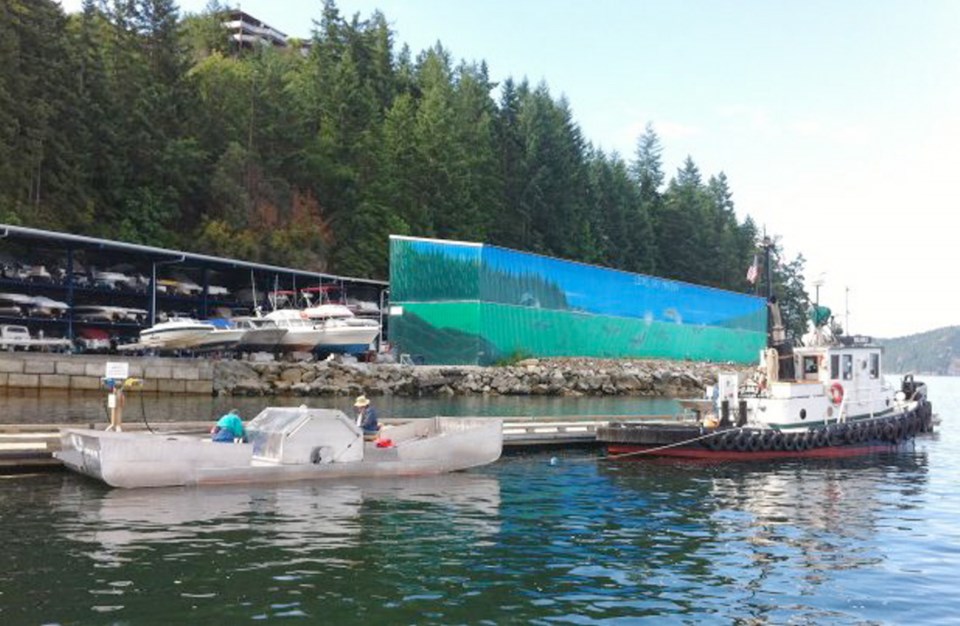It looks like some kind of fancy new-age barge.
But the floating unit to be anchored off the east coast of Vancouver Island next year won’t carry freight. It will harness tidal energy designed to power the nearby Dent Island Lodge north of Campbell River.
Lions Bay-based Water Wall Turbine Inc. recently received a $1.5-million federal grant to proceed with the demonstration project that represents the culmination of eight years of research.
The 25-metre long barge-like structure will secure a slow-moving paddlewheeler-type turbine five metres below the ocean surface, capable of producing up to 500 kilowatts of electricity.
Water Wall Turbine vice-president Russell Baker estimates the Dent Island Lodge — owned by the Nordstrom family of Seattle — needs about 200 kilowatts of power during the peak summer season.
“We’re looking at future clients who will require a full megawatt of electricity, much like a small village,” he said. “We hope to design those units after the success of this one.”
Company co-founders Marek Sredzki and Lodewyk Botha began testing small-scale models of their tidal-power devices on a South African canal several years ago before testing a larger 1:6-scale model unit in Lions Bay last year.
The firm plans to build a full-scale unit early next year and test it in Vancouver harbour before it’s towed to Dent Island to begin its life as a renewable-energy power provider.
Baker estimates the company will have spent close to $4 million by the time the system is installed and operational but feels the capital costs will be considerably less than other tidal-power units.
“Many of the tidal-energy systems developed in places like the North Sea and the Bay of Fundy involve units anchored to the sea floor — about 20 to 30 metres underneath the surface,” he said. “That creates capital costs that can make it very expensive to be competitive.”
Baker said his company’s nascent system will be integrated with battery technology developed by electric-car maker Tesla Motors.
“So when the tide is running fast, you can harness the energy and store it and then use it in a managed fashion,” he said.
Baker said Water Wall Turbine should be able to provide power for about 15 to 20 cents a kilowatt hour, compared with an estimated 65 cents a kilowatt hour Dent Island Lodge now pays for diesel power.
BC Hydro resource planning director Randy Reimann said Hydro estimates tidal power could eventually produce about 250 megawatts of electricity in B.C. but feels a lot more research and development has to occur before that happens.
BC Hydro’s proposed $8-billion Site C dam in northeast B.C. would generate about 1,100 megawatts of power.
“It’s still early stages in the technology,” Reimann said. “People want to put them in and see how they last and how efficient they are.”
He said one group is currently working with a Dutch tidal power manufacturer to examine the feasibility of a new system in Haida Gwaii. A tidal power demonstration project in the Race Rocks ecological reserve near Vancouver Island closed in 2011.
“The hurdle with tidal power now is that we have other renewable energy options that are available at a much lower cost,” he said.
Hydro estimates the unit energy cost for tidal power ranges from $264 to $581 per megawatt hour, compared with $115 to $365 for onshore wind power.
“But they are making inroads (with tidal power) and the more they get built, ultimately costs will drop as production increases,” Reimann said.
He hasn’t heard of many environmental concerns involving the best tidal power systems, which don’t have fast-moving working parts or sharp edges that could kill marine life.



